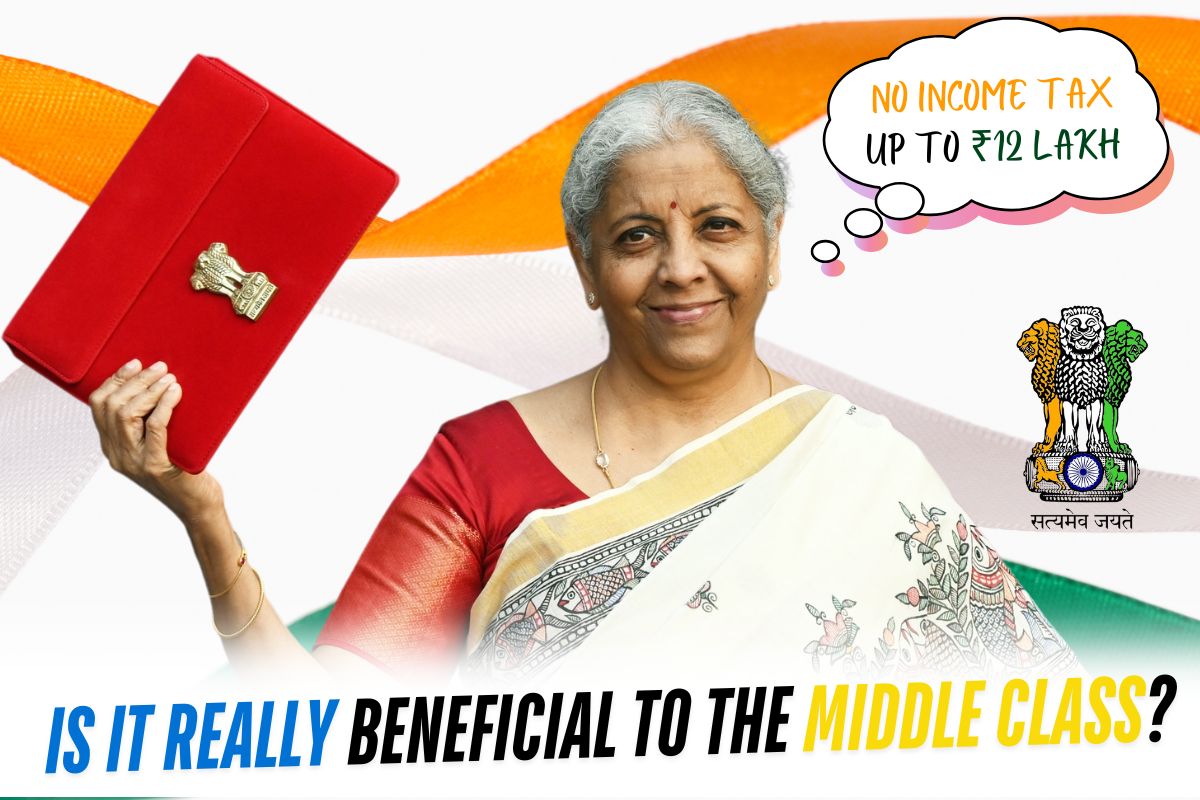


The recent announcement of no income tax up to ₹12 lakh in India has sparked considerable interest and controversy among both taxpayers and their financial advisors. This initiative, which Finance Minister Nirmala Sitharaman introduced in the Union Budget of 2025, aims to give those who bear the heaviest tax load -the middle class- great relief as well as stimulate growth of household consumption, savings, and investment. All of which will ultimately lead to an improvement in the national economy.
Table of Contents
ToggleUnder the new tax regime individuals who earn less than ₹12 lakh a year will not have to pay any income tax at all. For salaried taxpayers, the tax-free bracket will be extended up to ₹12.75 lakhs with through ₹75,000 the standard deduction. The new tax rate range will be as follows:
The middle class, often seen as the backbone of India’s economy, will be one of the biggest beneficiaries from this policy change. By lowering tax rates for those on incomes of up to ₹12 lakh per year, the government aims to put more money in people’s pockets after they have paid their taxes. With this extra disposable income, it is expected that consumption levels and household savings will rise along with substantial capital investment. And in turn, the pie grows for everyone.
One of the primary purposes of this policy change is to increase levels of household consumption. People now have more money in their pockets, and it is likely that middle-class families will spend additional money on everything from food to services such as travel. This rising demand can, in turn, have an impact on all sorts of industries — for example: retailing and real estate. With increased consumption of goods and services, businesses may be able to enjoy additional sales or profits-creating prospects for job opportunities which would never have existed before when the economy was stagnant.
The middle class is always in PM Modi’s heart.
Zero Income Tax till ₹12 Lakh Income.
The proposed tax exemption will go a long way in enhancing the financial well-being of the middle class. Congratulations to all the beneficiaries on this occasion.#ViksitBharatBudget2025
— Amit Shah (@AmitShah) February 1, 2025
This tax revision is expected to encourage saving and investment on the part of middle class taxpayers as it lightens their overall financial burden. With lower taxes on individuals, people have some money left over which they feel free to tuck away in such financial instruments as savings deposits fixed on a large scale across banks or stock market; any form of investment. This increased investment can provide businesses with the capital they need to develop new products, upgrading companies in the process. Further, more savings being held back indicates greater stability for family finances, indirectly improving their ability to cope with economic blows.
The new tax system also seeks to simplify the paid-up policy, making it more clear and understandable for all payers. By introducing distinct, easily understood slabs of taxation, the government wants tax returns to be less complex and confusing than before. This simplification will probably result in more people paying their taxes accurately and on time, as they will understand what is expected of them.
Although the policy revision has been broadly welcomed, it is not without its own snags and criticisms. Some experts argue that a new tax regime by itself may cause inequality among taxpayers. For example, those with incomes of a little more than ₹12 lakh may pay more tax than others just under this level. That in turn could provide some sunscreen effect for them–if you make over ₹12 lakh and you are a high earner, your income earning resilience is weakened because the higher taxes attach themselves progressively to one’s already long ago well-oiled income source.
Yet another possible drawback considering the impact of the policy change on government funds.
The government may see a decreasing in its revenues by releasing from taxation those with incomes under ₹12 lakh a year.
Faced with reduced tax revenue this could create problems in funding public services or building infrastructure for development. Development must be combined with truth, but boosters of this policy argue that economic activity will generate higher incomes from household consumption and investment might help make up most all profit losses: thus benefiting the economy at large.
In conclusion, the introduction in India of no income tax on earned wages up to ₹12 lakh represents a fundamental shift in government policy. By lightening the tax load on middle-class wage earners, the government hopes to increase family consumption savings and investment as a means of pushing forward this country’s economy. This type of tax incentive to the middle class may face many practical problems and be criticized by those very same groups; but levels do not lie. As the new tax regime takes effect, it will be critical to monitor its impact on taxpayers and the economy so as to ensure that it achieves what is intended.

